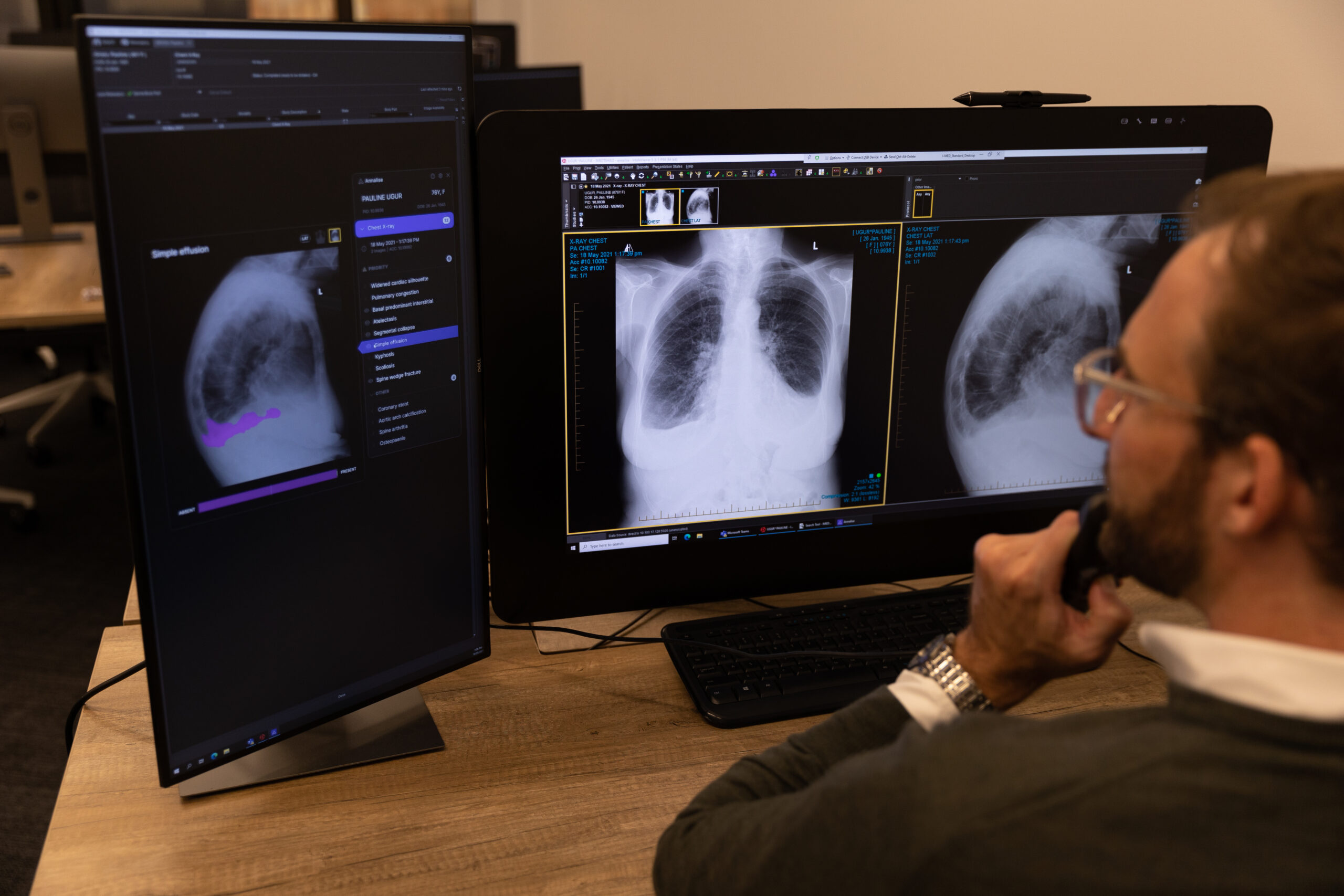Radiologists with breakthroughs on the brain
Radiologists with breakthroughs on the brain
harrison.ai co-founder Dimitry Tran is a firm believer in the power of technology to revolutionise medicine. He reasons that the high cost of training radiologists and pathologists means there can never be enough of them to care for our ageing population. “Technology is the answer, otherwise we will all suffer,” says Dimitry.
Which is why in 2019, he and his younger brother, Aengus, launched annalise.ai; a joint venture between harrison.ai and I-MED – the largest radiology provider in Australia.
annalise.ai’s first product was CXR, an AI tool to help detect pathologies in chest X-rays. It was a breakthrough technology, able to detect 124 indications, significantly improving accuracy and efficiency for radiologists. In just 12 months since launching, CXR is already being used by around 25 percent of radiologists.
It was only natural that the next big focus for annalise.ai should be the brain. For the past 18 months the team from annalise.ai has been developing their newest product, CT Brain.
“CT Brain is a really important development, because it helps to detect many significant diseases such as brain bleeds, tumours, and strokes,” says Dimitry. “These are vitally time sensitive issues – the earlier you detect a problem, the more chance you have of saving the part of the brain that is affected and changing the outcome for the patient’s quality of life, or even mortality.”
Developing CT Brain has seen a pilot program rolled out to select radiologists. The results have been phenomenal.
“The radiologists love it, and even in the pilot stage it has helped save the lives of several patients by detecting brain bleeds that would otherwise have been very difficult to spot,” Dimitry says. “This is the reason why we do what we do, creating tools that help scale the capacity of healthcare and improving patient outcomes.

“We have found that the majority of the radiologists who have tried CT Brain appreciate its ability to help them handle the workload. It’s like having another set of eyes. A radiologist’s job is very difficult; they have less than a minute to look at a black and white image and detect hundreds of different indicators. The thing is, they didn’t go to medical school to learn how to play ‘Where’s Wally’. They went to medical school to learn how to help patients. It’s not about finding the ‘thing’ on the screen – that’s what AI is very good at – it’s about looking at those findings and making a diagnosis and recommending a treatment.”
If the recent success of Annalise Enterprise CXR is any indication of how well radiologists are embracing the technology, CT Brain should experience a similar uptake. The product will be released in August this year, initially to around 300 radiologists, and expectations are high.
“We expect that by the end of the year we will get to the same stage we are at with CXR, with 1 in 4 using CT Brain,” says Dimitry. “This will be a game changer.”
Subscribe below to keep up to date with the latest news, events & podcasts from the world of harrison.ai & healthtech.
1670498500